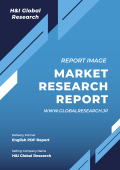1 Preface
2 Scope and Methodology
2.1 Objectives of the Study
2.2 Stakeholders
2.3 Data Sources
2.3.1 Primary Sources
2.3.2 Secondary Sources
2.4 Market Estimation
2.4.1 Bottom-Up Approach
2.4.2 Top-Down Approach
2.5 Forecasting Methodology
3 Executive Summary
4 Introduction
4.1 Overview
4.2 Key Industry Trends
5 Global Bio-Based Polymer Market
5.1 Market Overview
5.2 Market Performance
5.3 Impact of COVID-19
5.4 Market Forecast
6 Market Breakup by Type
6.1 Polyethylene (PE)
6.1.1 Market Trends
6.1.2 Market Forecast
6.2 Polyamide (PA)
6.2.1 Market Trends
6.2.2 Market Forecast
6.3 Polylactic Acid (PLA)
6.3.1 Market Trends
6.3.2 Market Forecast
6.4 Polyethylene Terephthalate (PET)
6.4.1 Market Trends
6.4.2 Market Forecast
6.5 Others
6.5.1 Market Trends
6.5.2 Market Forecast
7 Market Breakup by Application
7.1 Packaging
7.1.1 Market Trends
7.1.2 Market Forecast
7.2 Textile
7.2.1 Market Trends
7.2.2 Market Forecast
7.3 Automotive
7.3.1 Market Trends
7.3.2 Market Forecast
7.4 Industrial
7.4.1 Market Trends
7.4.2 Market Forecast
7.5 Agriculture
7.5.1 Market Trends
7.5.2 Market Forecast
7.6 Others
7.6.1 Market Trends
7.6.2 Market Forecast
8 Market Breakup by Region
8.1 North America
8.1.1 United States
8.1.1.1 Market Trends
8.1.1.2 Market Forecast
8.1.2 Canada
8.1.2.1 Market Trends
8.1.2.2 Market Forecast
8.2 Asia-Pacific
8.2.1 China
8.2.1.1 Market Trends
8.2.1.2 Market Forecast
8.2.2 Japan
8.2.2.1 Market Trends
8.2.2.2 Market Forecast
8.2.3 India
8.2.3.1 Market Trends
8.2.3.2 Market Forecast
8.2.4 South Korea
8.2.4.1 Market Trends
8.2.4.2 Market Forecast
8.2.5 Australia
8.2.5.1 Market Trends
8.2.5.2 Market Forecast
8.2.6 Indonesia
8.2.6.1 Market Trends
8.2.6.2 Market Forecast
8.2.7 Others
8.2.7.1 Market Trends
8.2.7.2 Market Forecast
8.3 Europe
8.3.1 Germany
8.3.1.1 Market Trends
8.3.1.2 Market Forecast
8.3.2 France
8.3.2.1 Market Trends
8.3.2.2 Market Forecast
8.3.3 United Kingdom
8.3.3.1 Market Trends
8.3.3.2 Market Forecast
8.3.4 Italy
8.3.4.1 Market Trends
8.3.4.2 Market Forecast
8.3.5 Spain
8.3.5.1 Market Trends
8.3.5.2 Market Forecast
8.3.6 Russia
8.3.6.1 Market Trends
8.3.6.2 Market Forecast
8.3.7 Others
8.3.7.1 Market Trends
8.3.7.2 Market Forecast
8.4 Latin America
8.4.1 Brazil
8.4.1.1 Market Trends
8.4.1.2 Market Forecast
8.4.2 Mexico
8.4.2.1 Market Trends
8.4.2.2 Market Forecast
8.4.3 Others
8.4.3.1 Market Trends
8.4.3.2 Market Forecast
8.5 Middle East and Africa
8.5.1 Market Trends
8.5.2 Market Breakup by Country
8.5.3 Market Forecast
9 SWOT Analysis
9.1 Overview
9.2 Strengths
9.3 Weaknesses
9.4 Opportunities
9.5 Threats
10 Value Chain Analysis
11 Porters Five Forces Analysis
11.1 Overview
11.2 Bargaining Power of Buyers
11.3 Bargaining Power of Suppliers
11.4 Degree of Competition
11.5 Threat of New Entrants
11.6 Threat of Substitutes
12 Price Analysis
13 Competitive Landscape
13.1 Market Structure
13.2 Key Players
13.3 Profiles of Key Players
13.3.1 Arkema S.A.
13.3.1.1 Company Overview
13.3.1.2 Product Portfolio
13.3.1.3 Financials
13.3.1.4 SWOT Analysis
13.3.2 BASF SE
13.3.2.1 Company Overview
13.3.2.2 Product Portfolio
13.3.2.3 Financials
13.3.2.4 SWOT Analysis
13.3.3 Biome Bioplastics Limited
13.3.3.1 Company Overview
13.3.3.2 Product Portfolio
13.3.4 Corbion N.V.
13.3.4.1 Company Overview
13.3.4.2 Product Portfolio
13.3.4.3 Financials
13.3.5 FKuR Kunststoff GmbH
13.3.5.1 Company Overview
13.3.5.2 Product Portfolio
13.3.6 Kuraray Co. Ltd.
13.3.6.1 Company Overview
13.3.6.2 Product Portfolio
13.3.6.3 Financials
13.3.6.4 SWOT Analysis
13.3.7 Mitsubishi Chemical Holdings Corporation
13.3.7.1 Company Overview
13.3.7.2 Product Portfolio
13.3.7.3 Financials
13.3.7.4 SWOT Analysis
13.3.8 Novamont S.p.A.
13.3.8.1 Company Overview
13.3.8.2 Product Portfolio
13.3.9 Rodenburg Productie B.V.
13.3.9.1 Company Overview
13.3.9.2 Product Portfolio
13.3.10 thyssenkrupp AG
13.3.10.1 Company Overview
13.3.10.2 Product Portfolio
13.3.10.3 Financials
13.3.10.4 SWOT Analysis
13.3.11 Toray Industries Inc.
13.3.11.1 Company Overview
13.3.11.2 Product Portfolio
13.3.11.3 Financials
13.3.11.4 SWOT Analysis
❖ 免責事項 ❖
http://www.globalresearch.jp/disclaimer










